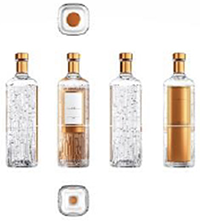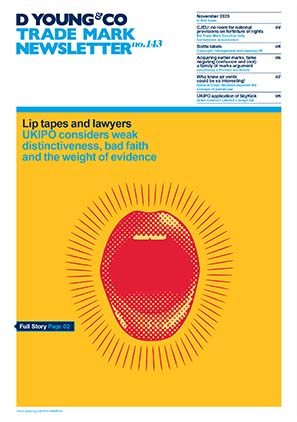“ABSOLUT-ly” distinctive: vodka bottle found distinctive and to indicate trade origin on appeal
The Absolut Company Aktiebolag (the applicant) sought to register a 3D mark as a European Union trade mark (EUTM) in class 33 alcoholic beverages, namely vodka.

The EUIPO found the application to lack distinctive character pursuant to Article 7(1)(b) EUTMR. The applicant appealed the decision.
The Board of Appeal raised three issues, as detailed below.
1. The EUIPO wrongly assumed that product get up cannot serve a trademark function
The Board of Appeal highlighted that a sign may fulfil various functions at one time. The mere fact that a sign has functions other than indicating origin, and may also serve decorative purposes, is not in itself a ground for refusal. In this respect the EUIPO had erred in its assumption that bottles are commonplace containers which merely serve the purpose of carrying a liquid.
The evidence submitted by the applicant highlighted that the vodka sector was characterised by a variety of different shaped and coloured bottles and highlighted some common aesthetics, including:
- common colours such as white, blue and silver, and transparent.
- a cylinder shape.
- a long neck.
The Board of Appeal commented that the use of a memorable specific packaging in such an environment prompts the public to the commercial origin of such products. The averagely attentive and circumspect EU consumer is aware of this and is thus accustomed to attributing a trademark function to distinctive product getups to the extent that it departs from the norms and packaging customs of the sector concerned.
2. The assessment of product get-up
In assessing the protection-establishing uniqueness of a packaging shape as an indication of origin it is necessary to relate the degree of uniqueness of the packaging to the specific situation and practice in the respective field of goods.
With regard to the shape mark applied for the following elements were found to be unique:
- The design of the back of the bottle being entirely copper-coloured.
- Front label consists of a prominent frame in the unusual copper colour
- The copper-coloured neck foil (neck wrapper).
It was highlighted that although a single colour normally is in itself not distinctive the sign applied for had shades ranging from copper to brown or gold.
The totality of features were found to distinguish the shape mark so clearly from the usual shapes and colours of vodka bottles that it was held that the relevant public could easily recognise the applicant’s imaginative bottle getup, and thus perceive the bottle as an indication of origin.
Accordingly, the Board of Apepal held that the EUIPO had erred in finding that the sign lacked distinctive character within the meaning of Article 7(1)(b) EUTMR and the mark was allowed to proceed to publication.
3. The evaluation of evidence
Moreover, the Board of Appeal found it “unlawful” that the EUIPO had based its conclusion on “acquired experience” rather than on the evidence and expert opinion submitted. It stated that, “From the point of view of the rule of law alone, the facts which lead the Office to refuse the mark on the basis of the absolute grounds for refusal must be legally plausible, verifiable and fully justiciable.”
Comment
The criteria for assessing the distinctive character of three-dimensional marks, consisting of the appearance of the product itself, are no different from those applicable to other categories of trade marks.
However, it must be taken into account that the average consumer’s perception is not necessarily the same as it is in relation to a verbal or figurative mark consisting of a sign which is independent of the appearance of the products it denotes.
The Board of Appeal’s stance was that the average consumer is not in the habit of making assumptions about the origin of products on the basis of their shape in the absence of any verbal or graphic element. It is therefore more difficult to establish distinctive character in relation to 3D marks than in relation to a verbal or figurative mark. In these circumstances, only a mark which departs significantly from the norm or customs of the sector is not devoid of any distinctive character for the purposes of article 7(1)(b).
Indeed, this case can be contrasted to Voss of Norway ASA v Office for Harmonisation in the Internal Market (trade marks and designs): C-445/13 P [2015] All ER (D) 52 (May), whereby the general court found that the bottle shape shown below did not depart significantly from the shape of other drink containers:


